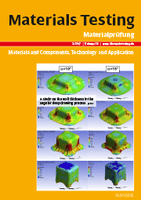
Materials Testing
Scope & Guideline
Empowering Research in Mechanics of Materials
Introduction
Aims and Scopes
- Materials Characterization:
Research in this area includes investigations into the mechanical, thermal, and structural properties of various materials using techniques such as X-ray diffraction, scanning electron microscopy, and mechanical testing methods. - Wear and Tribological Testing:
The journal extensively covers studies related to wear behavior, friction, and tribological properties of different materials, including composites and hybrids, providing insights into their performance in practical applications. - Corrosion and Environmental Resistance:
Papers frequently discuss the corrosion behavior of materials in various environments and conditions, highlighting the importance of understanding material degradation and longevity. - Additive Manufacturing and Composite Materials:
A significant focus is on the development and testing of additive manufacturing processes and composite materials, exploring their mechanical properties and potential applications in various industries. - Numerical Modeling and Simulation:
The journal features research that employs numerical methods and simulations to predict material behavior under different loading conditions, contributing to the optimization of material properties and testing techniques. - Innovative Testing Techniques:
Research on new testing methodologies, including non-destructive testing and advanced mechanical testing setups, is a core area, aiming to enhance the reliability and accuracy of material testing.
Trending and Emerging
- Advanced Composite Materials:
There is a growing trend towards the research and testing of advanced composite materials, particularly those that incorporate novel reinforcements or hybrid structures, reflecting the industry's demand for lightweight and high-strength materials. - Sustainable and Eco-Friendly Materials:
Research focusing on the development and testing of sustainable materials, including bio-based composites and recycling methods, is gaining traction as environmental concerns become more prominent. - Smart and Functional Materials:
An increase in studies on smart materials that can respond to environmental stimuli or have multifunctional properties is evident, indicating a shift towards materials with advanced capabilities. - Multiscale Modeling and Simulation:
The application of multiscale modeling techniques to predict material behavior at various scales is on the rise, allowing for a deeper understanding of material properties and performance. - Additive Manufacturing Innovations:
Research on innovations in additive manufacturing processes, including the development of new materials and optimization of printing parameters, is rapidly increasing as the technology matures and finds broader applications. - Nanomaterials and Nanocomposites:
There is a significant increase in studies related to the properties and testing of nanomaterials and their composites, driven by their potential for enhanced performance in various applications.
Declining or Waning
- Traditional Metallurgical Testing:
There has been a noticeable reduction in papers focusing solely on traditional metallurgical testing methods, such as basic tensile and hardness tests, as newer, more advanced methodologies gain prominence. - Basic Composite Studies:
Research solely focused on the fundamental properties of composite materials without innovative applications or advanced testing techniques is becoming less common, as the field moves towards more applied research. - Conventional Corrosion Testing:
Studies that rely on conventional corrosion testing methods without the integration of modern analytical techniques or novel materials are witnessing a decline, as researchers seek more comprehensive approaches. - Static Mechanical Testing:
There has been a shift away from static mechanical testing methods towards dynamic and real-world application testing, reflecting an evolving understanding of material behavior under various conditions. - Generalized Material Studies:
Research that does not focus on specific applications or advanced materials testing has diminished, as the journal aims to publish more targeted and impactful studies.
Similar Journals

ARCHIVES OF METALLURGY AND MATERIALS
Unlocking Innovations in Metals and AlloysArchives of Metallurgy and Materials is a prestigious open-access journal published by the Polish Academy of Sciences, Institute of Metallurgy and Materials Science. With its ISSN 1733-3490 and E-ISSN 2300-1909, this journal has been a critical resource for researchers and professionals in the field of materials science since its establishment in 2004. The journal focuses primarily on advancements in metals and alloys, contributing to the growing body of knowledge in this dynamic and evolving discipline. As acknowledged in the 2023 Scopus rankings, it currently holds a Q3 category in both Metals and Alloys with a rank of #117 out of 176 journals, indicating its commitment to quality research despite being relatively young in the indexing landscape. With its open-access policy initiated in 2010, the journal aims to enhance the dissemination of scientific findings and encourage collaboration among the global materials science community. Researchers, students, and industry professionals are invited to explore the valuable insights and innovations showcased within Archives of Metallurgy and Materials, contributing to the advancement of material technologies and applications.

REVISTA DE METALURGIA
Connecting researchers to the latest in metal and alloy studies.REVISTA DE METALURGIA, published by the CONSEJO SUPERIOR INVESTIGACIONES CIENTIFICAS-CSIC in Spain, stands as a significant open-access journal since 1995 that focuses on the fields of condensed matter physics, materials chemistry, and the study of metals and alloys. With an ISSN of 0034-8570 and an E-ISSN of 1988-4222, this journal aims to disseminate innovative research findings and reviews that contribute to the understanding and advancement of metallurgical science. Although currently ranked in the fourth quartile across several relevant categories in Scopus, including Materials Science and Physics, its commitment to open access promotes the wider distribution of knowledge in these fields, ensuring that emerging findings are accessible to researchers, industry professionals, and students alike. The journal covers research from its earliest issues in 1968, maintaining a continuous archive that enhances its contributions to the scientific community. For those passionate about the complexities of material properties and behaviors, REVISTA DE METALURGIA serves as a platform for impactful scholarship and collaborative advancement.
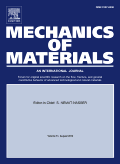
MECHANICS OF MATERIALS
Fostering Breakthroughs in Mechanics of MaterialsMECHANICS OF MATERIALS, published by ELSEVIER, is a premier international journal serving the dynamic fields of Materials Science and Mechanics. With an esteemed reputation reflected in its 2023 Quartile rankings—Q1 in Instrumentation, Q1 in Materials Science (miscellaneous), and Q1 in Mechanics of Materials—this journal offers a vital platform for the dissemination of cutting-edge research from 1982 to the present. Operating from its headquarters in Amsterdam, Netherlands, the journal boasts impressive Scopus ranks, including 22nd in Physics and Astronomy (Instrumentation) and 67th in Engineering (Mechanics of Materials), placing it firmly within the top echelons of academic publishing. Though not an open-access journal, its rigorous peer-reviewed content ensures high-quality contributions aimed at advancing knowledge and application in mechanics and materials. Researchers, professionals, and students are encouraged to engage with the latest studies and findings that underpin innovations in material properties, testing methodologies, and engineering applications, reinforcing the journal’s critical role in shaping the future of the discipline.
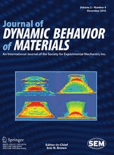
Journal of Dynamic Behavior of Materials
Unveiling the Secrets of Material DynamicsThe Journal of Dynamic Behavior of Materials, published by SpringerNature, serves as a premier platform for the dissemination of innovative research in the fields of materials science and mechanics of materials. With its ISSN 2199-7446 and E-ISSN 2199-7454, this international journal has established itself since its inception in 2015, showcasing groundbreaking insights into the dynamic properties and behaviors of various materials. Operating from Switzerland and headquartered in London, this journal embraces an open-access philosophy, albeit not entirely, to enhance research visibility. According to the Scopus rankings, it is positioned in the Q3 quartile for both materials science and mechanics of materials, indicating its growing prominence in the academic landscape. Researchers and professionals alike benefit from its wide-ranging contributions that address contemporary challenges and advancements, making it a critical resource for advancing knowledge and innovation in these crucial fields.
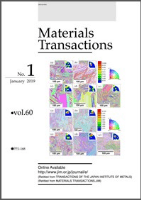
MATERIALS TRANSACTIONS
Exploring Innovations in Materials ResearchMATERIALS TRANSACTIONS, published by the Japan Institute of Metals & Materials, stands as a pivotal journal in the fields of Condensed Matter Physics, Materials Science, and Mechanical Engineering. Operating since 1993, this peer-reviewed journal aims to disseminate high-quality research that advances our understanding of material properties and behaviors under varied conditions. With an ISSN of 1345-9678 and an E-ISSN of 1347-5320, it provides open access options, ensuring that the latest findings are readily available to a global audience. The journal currently holds a commendable Q3 ranking across multiple categories, underscoring its relevance and impact in the respective fields. Located in Sendai, Japan, MATERIALS TRANSACTIONS has emerged as a vital resource for researchers, professionals, and students alike, fostering innovation and collaboration in material science and engineering methodologies. As the demand for advanced materials continues to rise, this journal serves as an essential platform for sharing and discussing cutting-edge research and developments.

Advances in Tribology
Connecting Researchers in Tribology GloballyAdvances in Tribology is a premier open access journal published by HINDAWI LTD, focused on the rapidly evolving fields of tribology, mechanical engineering, and materials science. Since its inception in 2008, the journal has provided a crucial platform for researchers, professionals, and students to disseminate knowledge and advancements in the understanding of friction, wear, and lubrication phenomena. With an impact factor reflective of its significance, Advances in Tribology is ranked in the Q3 category for both Mechanical Engineering and Surfaces, Coatings, and Films as of 2023, situating it among the prominent journals in its field. The journal's commitment to high-quality research is evident in its rigorous peer-review process and its dedication to fostering open access, allowing for widespread dissemination of impactful research. Published in Egypt with global reach, this journal aims to bridge the knowledge gap in tribological applications and innovations, serving as a key resource for those engaged in the study and application of surface interactions.

Obrabotka Metallov-Metal Working and Material Science
Driving Progress in Mechanical Engineering and BeyondObrabotka Metallov-Metal Working and Material Science is a pivotal journal published by Novosibirsk State Technical University, focusing on the dynamic fields of mechanical engineering, mechanics of materials, and the science of metals and alloys. With ISSN 1994-6309 and E-ISSN 2541-819X, the journal serves as a crucial platform for disseminating research from Russia and around the globe. Currently classified in the Q4 category for Mechanical Engineering and Mechanics of Materials, as well as Q3 for Metals and Alloys, it encompasses a wide range of studies from fundamental research to innovative applications. Despite its relatively recent inception in 2019, the journal has established itself with Scopus rankings that highlight its growing influence—Rank #122 out of 176 in Materials Science and Rank #510 out of 672 in Engineering. This journal aims to foster collaboration among researchers, professionals, and students by featuring original articles, reviews, and technical notes that address contemporary challenges in metal processing and material science. As it continues to evolve through 2024, Obrabotka Metallov remains dedicated to enhancing the understanding and application of materials science, making it a significant resource for those invested in the future of engineering and technology.
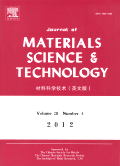
Journal of Materials Science & Technology
Exploring the Frontiers of Material TechnologiesThe Journal of Materials Science & Technology, published by JOURNAL MATER SCI TECHNOL in China, is a leading forum for the latest research in the multidisciplinary field of materials science. With the ISSN 1005-0302 and E-ISSN 1941-1162, this esteemed journal boasts an impressive impact factor and has established itself as a vital resource for professionals, researchers, and students alike. Covering a wide range of topics, including ceramics, composites, materials chemistry, mechanical engineering, and polymers, it has achieved a coveted Q1 ranking in multiple categories as of 2023, reflecting its position in the top tier of scholarly publications. Notably, the journal excels in its Scopus ranks, placing within the top 5% in categories such as Metals and Alloys and Mechanical Engineering. Aiming to foster knowledge and innovation in material development and application, the journal is committed to facilitating groundbreaking research and collaborations that propel the field forward. With its convergence of insights from 1993 to 2025, the Journal of Materials Science & Technology remains an indispensable resource for the advancement of materials science.
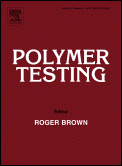
POLYMER TESTING
Exploring the Future of Polymer ApplicationsPOLYMER TESTING is an esteemed academic journal published by Elsevier Science Ltd, focusing on advancements in the field of polymers and their applications. With a high impact factor and category quartiles reflecting its influence, it ranks in the Q1 quartile in both Organic Chemistry and Polymers and Plastics, indicating its crucial role in shaping research in these disciplines. The journal has been open access since 2021, ensuring that cutting-edge research is readily available to researchers, practitioners, and students alike. Covering the convergence of foundational and innovative studies from 1980 and continuing through 2024, POLYMER TESTING appeals to a diverse audience, from materials scientists to chemical engineers, providing a platform for high-quality peer-reviewed articles that advance our understanding of polymer behavior, performance, and applications. If you are looking to stay abreast of the latest trends and breakthroughs in polymer science, POLYMER TESTING is your go-to resource.

KGK-Kautschuk Gummi Kunststoffe
Pioneering Developments in Elastomers and PolymersKGK-Kautschuk Gummi Kunststoffe is a prominent journal dedicated to the fields of industrial and manufacturing engineering, materials chemistry, mechanical engineering, and polymers and plastics. Published by DR ALFRED HUTHIG VERLAG GMBH in Germany, this journal has established itself as a vital resource for researchers and professionals involved in the rubber, elastomers, and polymer industries since its inception in 1978. With an emphasis on contemporary advancements and emerging technologies, the journal aims to disseminate cutting-edge research and developments in the understanding of material properties, processing techniques, and applications. While the journal is categorized in the Q4 quartile across multiple disciplines in 2023, it still plays a crucial role in bridging the gap between theory and practical innovation. Researchers, professionals, and students alike are encouraged to contribute to and engage with the latest insights in this dynamic field, fostering collaboration and knowledge sharing to advance applications in industry and academia.